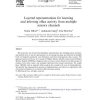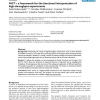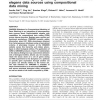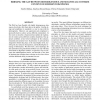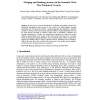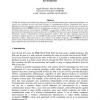CVIU
2004
13 years 4 months ago
2004
We present the use of layered probabilistic representations for modeling human activities, and describe how we use the representation to do sensing, learning, and inference at mul...
BMCBI
2005
13 years 4 months ago
2005
Background: Interpreting the results of high-throughput experiments, such as those obtained from DNA-microarrays, is an often time-consuming task due to the high number of data-po...
NAR
2008
13 years 4 months ago
2008
CMGSDB (Database for Computational Modeling of Gene Silencing) is an integration of heterogeneous data sources about Caenorhabditis elegans with capabilities for compositional dat...
DEXAW
2010
IEEE
13 years 5 months ago
2010
IEEE
The Web has been flooded with highly heterogeneous data sources that freely offer their data to the public. Careful design and compliance to standards is a way to cope with the he...
ASWC
2009
Springer
13 years 5 months ago
2009
Springer
In this paper we propose algorithms for combining and ranking answers from distributed heterogeneous data sources in the context of a multi-ontology Question Answering task. Our pr...
SWAP
2007
13 years 5 months ago
2007
Abstract. Recent research showed the benefits of adopting formal ontologies as a means for accessing heterogeneous data sources. The use of an ontology not only provides a uniform...
WIIW
2001
13 years 5 months ago
2001
: Molecular biology data are placed in different databases, repositories and flat files, usually distributed over the web. Distinct data models with schemas that are often changing...
SBBD
2004
13 years 5 months ago
2004
Flexible and dynamic environments are characterized by high independence from connection participants, low control over available services and high tolerance to communication fail...
FLAIRS
2001
13 years 5 months ago
2001
The World Wide Webprovides new opportunities for collecting information from distributed, multiple, and heterogeneous data sources. Information brokering can bc used to provide co...
DAGSTUHL
2006
13 years 5 months ago
2006
Building up spatial data infrastructures involves the task of dealing with heterogeneous data sources which often bear inconsistencies and contradictions, respectively. One main re...
